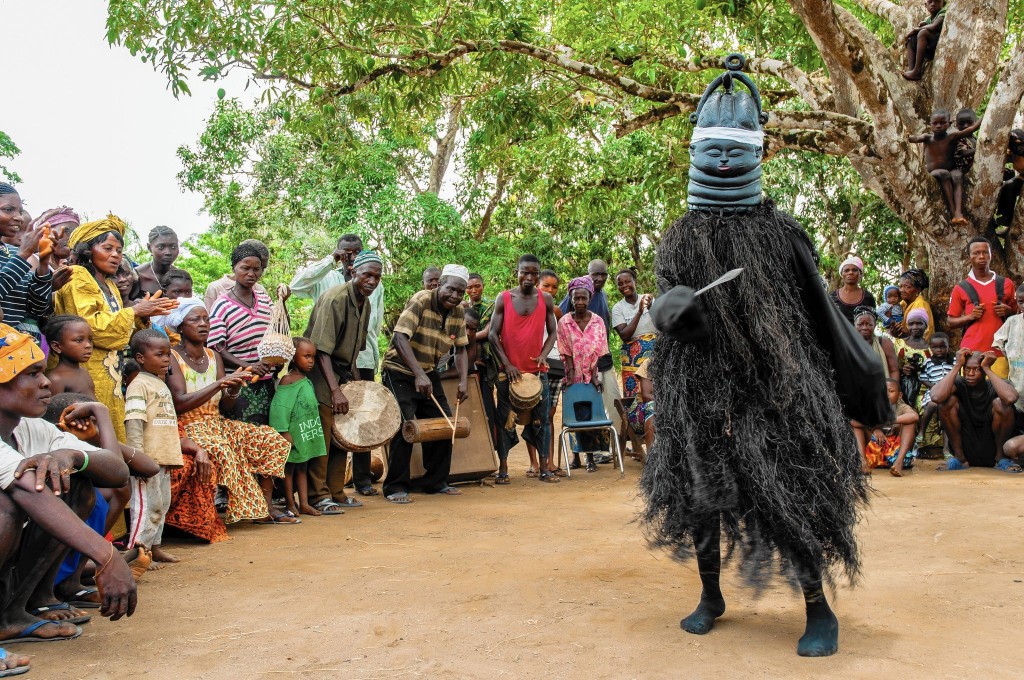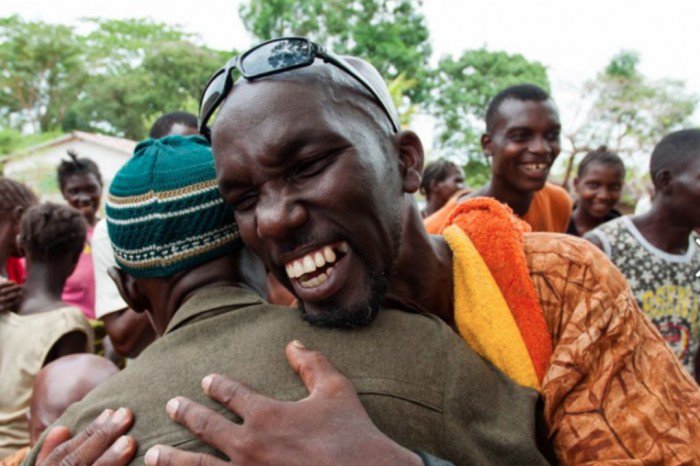 They Are We tells a story that, were it not told by a University professor in the middle of a documentary, you’d swear couldn’t possibly be true. Emma Christopher, who’s written extensively on the Atlantic slave trade and teaches at the University of Sydney, found herself connecting a remote chiefdom in Sierra Leone with a small Afro-Cuban community in Perico whose traditional song and dances suggest a direct lineage to that Western African group. The film’s title is a direct quote from a Sierra Leonean upon watching videos of the Cuban dancers: “They are we!” he exclaimed, seeing something in the annual San Lazaro ceremony that looked all too familiar.
They Are We tells a story that, were it not told by a University professor in the middle of a documentary, you’d swear couldn’t possibly be true. Emma Christopher, who’s written extensively on the Atlantic slave trade and teaches at the University of Sydney, found herself connecting a remote chiefdom in Sierra Leone with a small Afro-Cuban community in Perico whose traditional song and dances suggest a direct lineage to that Western African group. The film’s title is a direct quote from a Sierra Leonean upon watching videos of the Cuban dancers: “They are we!” he exclaimed, seeing something in the annual San Lazaro ceremony that looked all too familiar.
That’s right, a lively celebration by the proud members of the Gangá-Longobá in central Cuba eventually led Christopher to find the African village from whence the songs came from generations ago. Moreover, she arranged for these Afro-Cuban people to fly to the place where their ancestor was torn from her family, sold to slavery, and taken to the Caribbean island all those years ago.
As Christopher told an audience here in New York, “It’s completely incredible that they’ve kept these songs and dances alive for all these centuries!” The songs were being sung in a very particular kind of language — the Banta tongue — which is nearing extinction in Western Africa. Armed with this amazing story, Christopher moved to Cuba for two years and ended up getting a Fellowship from the Australian Research Council that helped her fund the finished film. In it, we see four Cubans from Perico make the journey to Sierra Leone where they are met with open arms by a community that was all too happy to get to know these long-lost family members. They Are We is a moving story that celebrates this colorful and vibrant slice of Afro-Cuban culture, and which shows the resilience of tradition even in the face of historical violence.
Christopher was on hand after the film’s screening at the Film Society of Lincoln Center’s Dance on Camera series for a Q&A where she talked about the long-gestating project, and explained more about the cultural similarities between these two geographically distinct communities.
Find some highlights from the Q&A below.
On How They Are We Came Together
It was really my incredible pleasure to be part of that. It was an amazing privilege. I never planned to make this film. I was working on a totally separate project. I originally filmed the Cubans out of interest, them being the only group still in Cuba that celebrated being Ganga which I know, as a historian, means they were from Sierra Leone/Liberia. They did not know this at this point. I wanted to show it to my students in Australia who don’t know much about Afro-Cuban cultures. And then, as you saw in the film, when I was working in Liberia on the original project, these people in a cafe saw it, and they were like “You have to show it to the whole town.” And what I initially thought I was doing, what I was originally interested in, was studying people’s reactions to it. So I started showing it across West Africa in order to get people’s reactions. Because I was intrigued by the way they responded. Because even then I had no idea that we’d eventually be quite certain that an answer was possible.
On Choosing Who Got to Make the Trip to Africa
[Who you see in the film is] a small part of the group. In some way I turned it over to them. It’s kind of interesting: this had always been a women’s society, and it’s pretty clear that it also was in Cuba until Florinda — Cuco’s grandmother — died. Florinda had three daughters. It had always passed from mother to daughter up until that points. But she had three daughters, two of whom predeceased her, and one of whom had medical problems. She was not able to pass it to her. But she passed it to her granddaughter, Piyuya who you saw in the film. But what happened was, in Cuba, after Florinda died, a Santero —and Santería is a much more male-dominated religion — said, well it should stay in the family and it should be passed to Cuco, Florinda’s grandson. So Cuco thinks of himself as the leader and that’s fine. Except everyone else thinks of Piyuya as the leader because she’s a woman and she inherited it from the former leader. Piyuya was sadly, too old to come; she’s passed away since then. She was 85 in the film. She was not strong enough for the journey.
But Cuco really wanted to come and he wanted to bring his grandson. And I very much wanted to bring Alfredo because he was someone who had been carving African art. He was also known as really teaching children about the pride in their African roots. And then I said that they were not bringing four guys, because that’s a different dynamic, and so, of course, it was Elvira who’s the successor. What was interesting was that when we got to Africa was that the Africans presumed that Elvia is the leader. And so Cuco would say that he’s been waiting for his grandmother to appear to him in a dream for 30-odd years to tell him the secrets, but in Africa, unfortunately, he realized that this wasn’t going to happen. Because it’s a woman’s secrets. And this was a bit of a surprise to him.
On the Surprising Cultural Resilience of Songs And Dances
The [Cubans] did not have that much of a sense of what it meant. Certainly not in terms of the dances. The songs have slightly different meanings to them but what was kind of intriguing is that they more or less sing them in the same order as the Sierra Leoneans. It’s not in the film, but there’s actually a recording by Lydia Cabrera, the well-known Cuban-American anthropologist. She recorded the Gangá-Longobá in the 1950s. But when Cabrera came to the U.S. from Cuba after the revolution, she brought those recordings with her and then kind of forgot that they existed. And I’d taken those back to Cuba and Sierra Leone and they are very much more identifiable to the Sierra Leoneans.
In fact, this one, which I found when I was editing this when I was checking the subtitles for it, there’s a lot of evidence that up until 1980 Florinda knew exactly what those songs meant. Because she still says words in the Cabrera recordings that indicate that she had much more clear meaning and what’s interesting and that up until her death, she was known in the Perico region as a herbal healer. So even though today they’d forgotten that some of the songs are herbal remedies, there’s quite a lot of evidence that she knew. There are clear differences in meaning, but underneath that, there’s more commonality than I ever would have anticipated.


